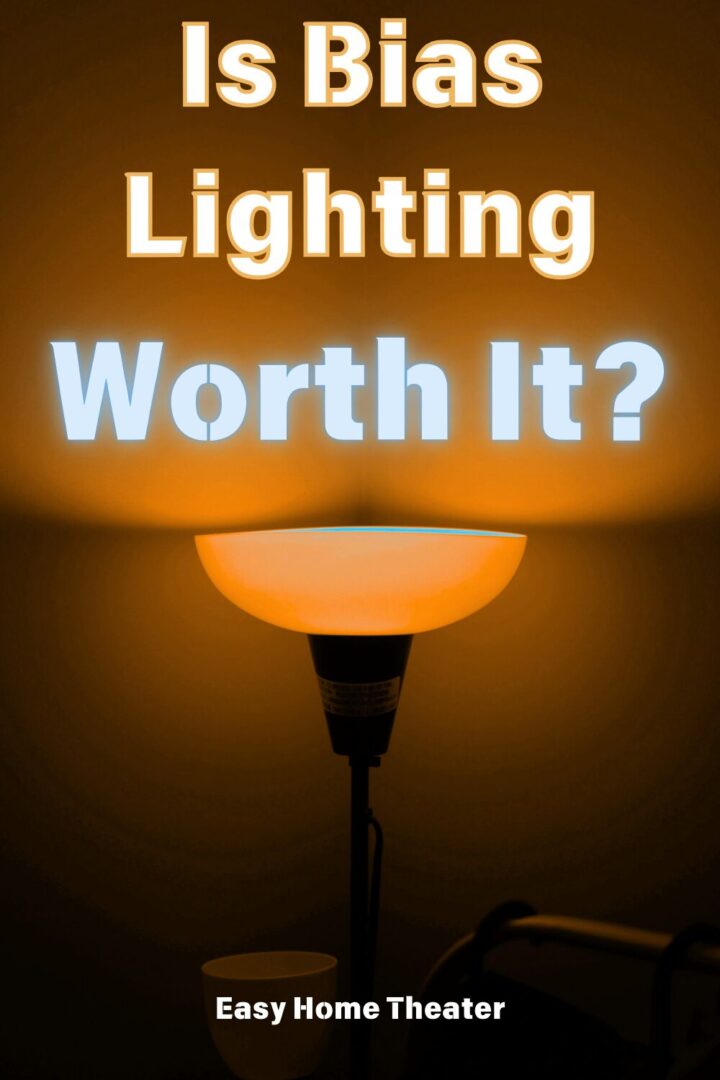Is Bias Lighting Worth It? (Improve Picture Quality)
Is Bias Lighting Worth It? (Improve Picture Quality)

Yes bias lighting/ambient lighting is worth it as it may amplify the perceived visual difference between the light and dark elements on screen, which can make black levels look deeper — resulting in potentially better perceived picture quality, a better viewing experience in longer viewing sessions, and is relatively easy to install. Plus it can add style to the room.
You know, as the years go by, I feel like home theater just gets more and more interesting.
From new smart home tech, to new formats like IMAX Enhanced, it really feels like there’s something new introduced every day.
So with that, what I wanted to do today was highlight an interesting technology that while not necessarily new per se, still provides tangible benefit to your home theater viewing experience.
What might that be?
Bias lighting also often referred to as ambient lighting.
But what exactly is bias lighting and more importantly, is bias lighting for your TV and room actually worth it?
Let’s find out!
What Does Bias Lighting Do?

So the basic premise behind bias lighting is it helps to decrease the perceived difference in brightness between the content being shown on your screen and the actual lighting in the room.
To make it easier to understand we’ll use an example.
Imagine you’re gaming on a monitor or watching TV in a dark room for a few hours, and your eyes start to get sore from the monitor lighting.
Well by placing this kind of lighting around your monitor or display, it may make your screen appear not as bright in comparison to the room — which can make it a lot more manageable to watch.
Believe it or not, it can also have a positive impact on your picture quality itself too.
Since light interacts with everything you see, including the human eye itself, it can alter the perception of your content in a way that can make seem improved.
If done right, you might notice that your black levels in your content seem darker in a way and the image looks more dynamic even though nothing really changed with the display itself.
It’s just because the way we perceive light makes it seem that way.
There’s many different types of this lighting, and even some that integrate with the display itself — but in general they’re typically small LED strips that are placed behind or in close proximity to the screen
Some are even adjustable so they can be cut the right length to fit your particular screen.
I personally really like ambient lighting in general with home theaters and feel like they add personality to it in my opinion.
When Should Bias Lighting Be Used?

But when should bias lighting actually be used?
I’d say if your primary watching environment is dark or if your screen seems too bright in normal viewing conditions to you then bias lighting can be a good idea.
Some people might still prefer the look of their entertainment center without it though, so it really boils down to preference at the end of the day.
Where Do You Put Bias Lighting?
Where do you put bias lighting?
Well behind your TV would be the ideal spot for the best results, but placed around or even under the display and projected upwards can work well too.
Just remember that if it’s set too brightly, it can have a negative impact on picture quality which is why it’s important to get the setting just right.
How Bright Should My Bias Lighting Be?

So then with all of this talk about getting the settings right, how bright should your bias lighting actually be?
In my opinion I would say it really depends on the brightness of the room but it should be somewhat visible but not too bright.
Any more than it looking somewhat dim and it starts to diminish the perceived visual benefit and can make the screen start to look darker by comparison.
If too bright it can also call more attention to itself by being distracting since the main focus should be on the content you’re watching.
What Is The Best Color For Bias Lighting?
Another thing to keep in mind though is the color temperature of the light itself matters too.
Now there’s 2 factors that play into this involving both the CRI (color-rendering index) and the CCT (correlated color temperature)
But basically the recommended color temperature for bias lighting is 6500Kelvin as that’s not only the specific color temperature that your television is designed in mind with & the one film makers create their content in — but also the one that gives the best representation of realism.
It’s the industry standard for content and one that’s felt to give the best balance of color and performance.
You can of course use LED lighting that connects to your smartphone to adjust the color for preference and aesthetics, but that’s recommended color temperature for the best result.
That’s also the recommended color temperature in terms of display modes with the warmest color setting often being closest to this.
Bias Lighting & Watching For Extended Periods Of Time
I mentioned this earlier, but there is sentiment out there that feels as though bias lighting can be helpful when watching content for long periods of time (though it depends since everyone is different)
Besides blue light exposure which is another thing in and of itself, the juxtaposition of the intensity of the light from your screen and your room could be harsh visually to some.
However when implemented correctly with the light not being set too bright, it’s possible it may helpful in that regard (but again it depends)
Final Thoughts
A quick one today, but I just wanted to highlight the benefits of bias lighting and how it’s an easy way to boost picture quality while helping to add flair to the look of your home theater.
In short, yes it’s definitely worth it in my opinion and can be a great way to improve the look of your home theater and general aesthetic of the room.
Until next time, make it easy, keep it simple!
About Me








Leave a Reply